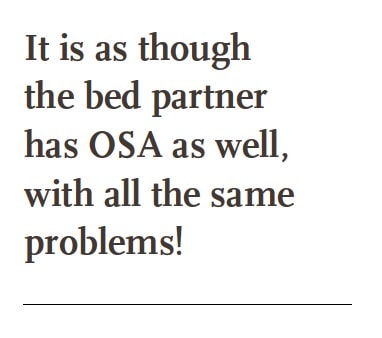Untreated obstructive sleep apnea (OSA) affects not only the quality of life for the individual suffering with the condition, but the quantity of life as well. There is significant amount of medical research now, and more each year, that demonstrates the serious consequences of sleep deprivation / sleep fragmentation / chronic intermittent hypoxia (all of which accompanies OSA) to the person not successfully managing this condition.
It is well documented that multiple bodily systems are damaged by untreated OSA – cardiovascular, endocrine, and vascular, as well as impaired neurocognitive functioning. This damage can contribute to a number of serious medical conditions; many of these are life threatening / life shortening.
Beyond the individual whose life is shortened and made miserable, there are others similarly affected either directly or indirectly due failure to address OSA effectively. This brief essay seeks to illuminate the public health urgency of treating sleep apnea due to the impact spreading beyond just the individual. I conclude with a plea to members of the dental community to intervene.
The harm from OSA extends to the bed partner, if there still is one. Snoring, which frequently precedes the pauses in breathing can disrupt the sleep of the bed partner, as can the gasping and startling that can accompany the arousal that occurs when breathing restarts. It is as though the bed partner has OSA as well with all the attendant consequences – daytime sleepiness, weight gain, and irritability, all from fragmented, poor quality sleep. It would be interesting to see how the divorce rate correlates with the incidence of untreated sleep apnea among previously married couples.

The negative effects on the direct and indirect sufferers can spill over onto the children and other family members. Poor sleep impairs judgment and provokes short tempers; family members suffer. The injury to them may be less apparent but is no less serious – the psychological harm can have consequences into later life.
Excessive daytime sleepiness (EDS), one of the better known sequela of OSA, can have dramatic consequences outside the home as well. The media is full of accounts of drivers, commercial or private passenger, who fall asleep while driving or who are operating a vehicle while drowsy causing serious auto or truck accidents resulting in injury, death and property damage.
 The workplace is also not immune from the negative impact of untreated OSA. The cost to employers can be direct; health insurance costs increase to manage chronic diseases like high blood pressure and diabetes. EDS can also result in workplace accidents and errors in judgment that result in financial losses.
The workplace is also not immune from the negative impact of untreated OSA. The cost to employers can be direct; health insurance costs increase to manage chronic diseases like high blood pressure and diabetes. EDS can also result in workplace accidents and errors in judgment that result in financial losses.
The effects of this condition, not properly managed, extend beyond the home and the workplace. The larger community suffers from the additional expense of managing chronic conditions like heart disease, diabetes and depression through higher health care utilization which in turn results in higher healthcare costs.
A number of years ago, I described this as the ripple effect of OSA. Where the poor health of one sufferer spreads out like the ripples a stone thrown in the middle of a pond, extending further and further out, negatively impacting many people. If one considers how many people who remain undiagnosed with OSA – the numbers are in the tens of millions of adults – the turbulence in the pond is staggering.
Dentists, whether they are actively engaged in sleep medicine or not, have a unique opportunity to help settle the waters by using the semi-annual preventive care visit to educate patients about their risks of sleep apnea. Evidence of mouth breathing or inflammation of the upper airway could lead to several simple questions about sleep quality. Positive findings trigger a referral to a qualified sleep medicine physician for further evaluation.
Oral appliance therapy administered by a dentist qualified in dental sleep medicine is recognized now as a first-line therapy. The number of dentists qualified to provide this intervention and ongoing care is increasing year by year. My hope is that those reading this opinion piece will do what they can to address what unfortunately is seen as a “sleeping” epidemic.
Stay Relevant With Dental Sleep Practice
Join our email list for CE courses and webinars, articles and more..
